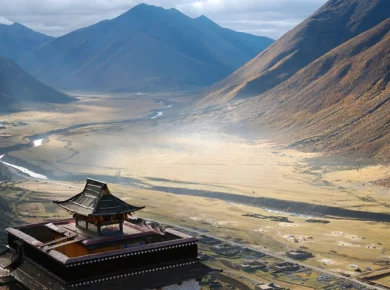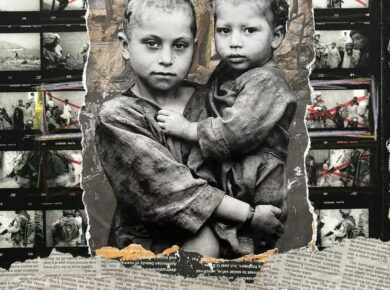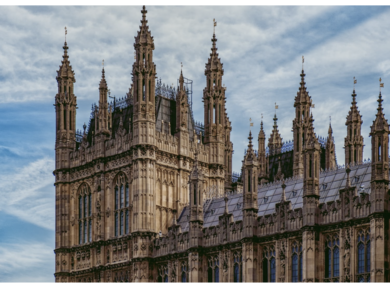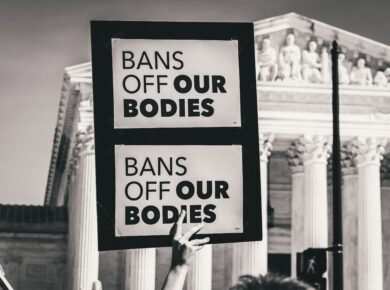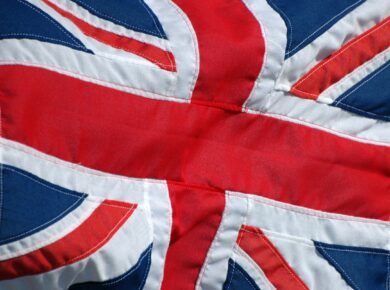Disclaimer: This blog post solely reflects the opinion of the authors and should not be taken to represent the general views of IPPR’s management/ editorial team or those of fellow authors.
Since its independence in 1991, Ukraine has been witness to major corruption scandals, economic mismanagement and smouldering seven-year conflict in Russia on its eastern border. Recent US action in Ukraine under new president Volodymyr Zelensky sparked a lively debate about the future of Ukraine and its eastern region Donbas. The ongoing tensions between Ukraine and Russia have resulted in recent efforts by western powers, namely the EU and the US in ensuring that there is support for Ukrainian efforts. What does this mean for the escalation of violence in the region of Crimea, and will this result in a resolution?
The Historical Ties Between Ukraine and Russia
The Links between Ukraine and Russia have existed for centuries. Ukraine has been subject to many invasions and has been annexed and existed under Tsarist Russian as well as Soviet rule throughout its history. After the Second World War, Ukraine had obtained a degree of independence, and Crimea had been transferred to be part of the Ukrainian SSR in 1945. This followed through to 1991, after the demise of the USSR and Ukraine’s inevitable independence as a nation-state through popular vote. Where the majority of the population, including Crimea, voted for Ukrainian independence. Turbulence ensued from the independence of Ukraine, where protests would occur around political issues, and the ever-present political corruption within the country. Such issues and protests have existed and have continued from the onset of its independence and have posed a major problem for Ukrainian politics. Tensions between pro-West and pro-Russia opinions have predominated Ukranian politics. Even though support for Ukraine’s independence was high in all regions in the 1991 referendum, Ukraine has been sharply ethnically divided ever since. Ukraninan and Russian ethnicities divide west, center and south of the country, representing an ever lasting political divide between pursuing closer relations with Russia and closer relations with the West (Barrington, 2021). For instance, the crisis in Ukraine began with protests in Kiev after President Viktor Yanukovych’s decision to seek closer ties with Russia, rather than with the EU.
Recent Tensions and the Rise of Ukraine’s Conflict
The current and ongoing tensions between Russia and Ukraine began in 2013, the leader at the time – President Yanukovych – withdrew from talks with the EU, while resuming dialogue with Russia to join the Eurasian Customs Union. Due to the government’s decision to abandon plans to sign an association agreement with the EU, mass protests began in Kiev. Blaming Russian pressure for the sudden decision, the peaceful demonstrations in Kiev’s Maidan square turned violent, with government security forces killing more than one hundred people.
In 2014, Yanukovych reached a settlement with opposition leaders for presidential elections in the same year and fled to Russia, leaving a trail of corruption scandals. The opposing party then took over. Consequently, Pro-Russia forces and Russian soldiers seized control over the Ukranian Crimean peninsula.The regional authorities held a dubious referendum, resulting in the majority of voters wanting to secede and join Russia. However, the EU declared the referendum ‘illegitimate’ and the UN General Assembly voted against recognising the referendum result, expelling Russia from the Group of Eight. Putin justified the annexation as an act of protection toward ethnic Russians and a moral obligation to recognise this territory in response to the needs of the people. Then, Russian troops entered Crimea, while new parliamentary elections depicted major support of pro-Western parties. Viktor Poroshenko was elected president and shortly after that the U.S. President Barack Obama signaled interest in helping Poroshenko battle corruption.
In 2015, Russia president Vladimir Putin and Poroshenko negotiated the first Minsk agreement for a cease-fire in eastern Ukraine, not implemented on the ground. Subsequently, a second agreement was signed with the support of France and Germany. Although the agreement included an immediate cease-fire and withdrawal of all heavy weaponry, fire persisted and both parties often accused one another of violating the agreement.
In 2017, Ukraine signed an association agreement with the EU. The separation of Ukraine ensues, as they establish an Orthodox Church, independent from Russian supervision in 2018 and in 2019 the two countries swap prisoners that were captured during the seizure of Crimea in 2014. Despite both parties’ attempts for negotiating peace, the conflict in eastern Ukraine remains burning to this day.
President Zelensky’s Radical Policy Shift
With the progression of the conflict, support for a Customs Union with Russia has collapsed, contributing to a process of higher integration and support of the notion of Ukraine as a separate state (Pop-Eleches & Robertson, 2018). This has been confirmed by the results of the polls from 2019 elections, when now president Zelensky advocated for a pro-EU Ukraine – one that is free from Russia’s pressure and contributions to mismanagement and corruption. Indeed we see a similar trend amidst Russia’s persistent tensions with Crimea – about 70% Ukranians tend to support the EU and the US – 65% more positively than Russia (Ipsos, 2020). President Volodymyr Zelensky has well taken political advantage of these attitudes in Ukraine, as he has recently called for a more substantial diplomatic role of US, UK and Canada in ending the conflict in Crimea and has urged western nations to support changes of the second Minsk agreement between Kiev and Moscow.
In late March this year, president Volodymyr Zelensky took action to take down Ukraine’s powerful oligarchs. Three pro-Moscow television stations linked to a powerful politician sympathising with Russia were shut down for spreading Russian disinformation. The television channels were owned by an associate of Viktor Medvedchuk, leader of the country’s main pro-Russia party, who, according to international observers, controlled the outlets by proxy through his influence over their owner. Shortly after, Viktor Medvedchuk’s assets were frozen and from early May, Ukranian prosecutors have sought to arrest him with preliminary charges for treason and misuse of national resources in Crimea. Prosecutor-general declared he had attempted to acquire offshore oil and gas fields in Crimea, implicitly assuming Crimea Russian territory. Viktor Medvedchuk has been long known for his pro-Russian activities and ties, but described the recent charges as political repressions. This has been seen as a resistance act of Volodymyr Zelensky, part of a powerful policy shift that – with support of Western leaders – has presented fruitful opportunities for ending corruption, unlawful russian influence and establishing peace in Crimea once and for all. Nevertheless, tensions have persisted – more than 100,000 Russian troops deployed in early 2021 have not been withdrawn.
Recent Western Support
Upon the recent events occurring from the beginning of 2021, an increase of attacks between the two countries and heightened tensions, where Ukraine has been reporting pro-Russian forces constantly violating terms of agreement, and further numbers of ceasefire violations, where a number of Ukrainian soldiers have lost their lives (UNIAN, 2021). Recent progressions, despite claims by Putin that Russia will be pulling troops out of Crimea (Reuters, 2021), include a complaint filed by Ukraine concerning human rights violations by Russia in Crimea. The European Court of Human rights rules it ‘’partly admissible’’, as the recent tensions that have escalated within Crimea, where it appears that Russia is “setting up a pretext to go to war” (Eurotopics, 2021). Therefore, President Zelensky has called for NATO to speed up the progression of their membership (Olearchyk, et al. 2021) as well as requests for further support from western powers.
The increasing escalations come at a time under the newly elected president Joe Biden who has a stronger stance against the annexation of Crimea, taking further steps to ensure support for Ukraine. Antony Blinken, US foreign secretary, recently visited Ukraine and supported the country in their fight against the Russian forces. Blinken’s visit to Ukraine, which has been timed according to the heightened tensions and very early on in the Biden administration, illustrates the importance for the new administration to ensure that there is stability within Ukraine and that the West is united with the country against the Russian perversions. This is crystallised with the EU report, in late 2020, on the situation and the lack of sanctions and support and urged for the easing of tensions from Russia, illustrating the importance of the EU’s efforts in integration of Ukraine and its further support for the country in light of its efforts standing against the Russian threats. The increase in support for Ukrainian efforts in the last few months have illustrated a newfound hope in a resolution in the ongoing tensions.
Concluding Thoughts
Ultimately, the recent newfound support for Ukraine under the Biden administration has illustrated a new lease of hope for the country in an attempt at integration with the west. The current EU interest in support for Ukraine places further pressure on current president Zelensky to solve domestic issues, such as in prevention of corruption and strengthening the nation under a cohesive stance against Russia. As Russia wishes to destabilize Ukraine, weakening it till it ultimately becomes a failed state for its own incentives, the onset of the violence from 2014 has meant that there has been an increase in economic pressure as well as strain on Ukrianain defence (Wilson, 2017). With the newfound support from western nations for Ukraine, the future of the Crimea region can be seen as hopeful for Ukraine in its independence as well as its closer ties with the West, this being an issue for Russia as it has always seen the nation as an extension of its own (Åslund, et al. 2021).
References:
ÅSLUND, A. et al. 2021. Biden and Ukraine:: A Strategy for the New Administration. Atlantic Council. Available at: https://www.jstor.org/stable/resrep30745. ;
Atlantic Council. 2021. ‘Blinken Kyiv visit analysis: What next for US-Ukraine ties?’, 11 May. Available at: https://www.atlanticcouncil.org/blogs/ukrainealert/blinken-in-kyiv-what-next-for-us-ukr aine-ties/.
Pop-Eleches, G., & Robertson, G. B. 2018. Identity and political preferences in Ukraine–before and after the Euromaidan. Post-Soviet Affairs, 34(2-3), 107-118.
Barrington, L. 2021. Is the regional divide in Ukraine an identity divide?. Eurasian Geography and Economics, 1-26.
Britannica. Ukraine – History (no date) Encyclopedia Britannica. Available at: https://www.britannica.com/place/Ukraine.
Eurotopics. Eastern Ukraine: how serious is the situation? (no date) eurotopics.net. Available at: https://www.eurotopics.net/en/259007/eastern-ukraine-how-serious-is-the-situation. ;
Ipsos. 2020. Global Advisor in Ukraine. Available at: https://www.ipsos.com/sites/default/files/ct/news/documents/2020-10/ga_countries_u sa_eng_0.pdf
Olearchyk, R., Manson, K. and Peel, M. 2021. Ukraine pressures Nato to speed path to membership. Available at: https://www.ft.com/content/e7dc0f67-fd63-4c2b-bcc3-fdbe06c4672a. ;
Press Release: EU’s annual Association Implementation Report. 2020. REPORT on the implementation of the EU Association Agreement with Ukraine. Available at: https://www.europarl.europa.eu/doceo/document/A-9-2020-0219_EN.html. ;
Reuters. 2021. Russia says it has begun pulling out troops from Crimea after drills. Available at: https://www.reuters.com/world/europe/russia-says-it-has-begun-pulling-out-troops-cri mea-after-drills-2021-04-23/.
UNIAN.info. 2021. UNIAN: News of Ukraine this year – the last days in Ukraine. Available at: https://www.unian.info/. ;
Wilson, A. 2017. Russia’s Unfinished Business in Ukraine. American Enterprise Institute. Available at: https://www.jstor.org/stable/resrep03301 .
By Remina and Sara
Remina Aleksieva is pursuing an MSc in International Public Policy at UCL. She is interested in behavioural science based policy-making, education and environmental policy, and Central and Eastern European politics.
Sarah is studying a MSc in International Public Policy. Interested in Iranian foreign and domestic politics. She is passionate about foreign policy, human rights, and ethics.

